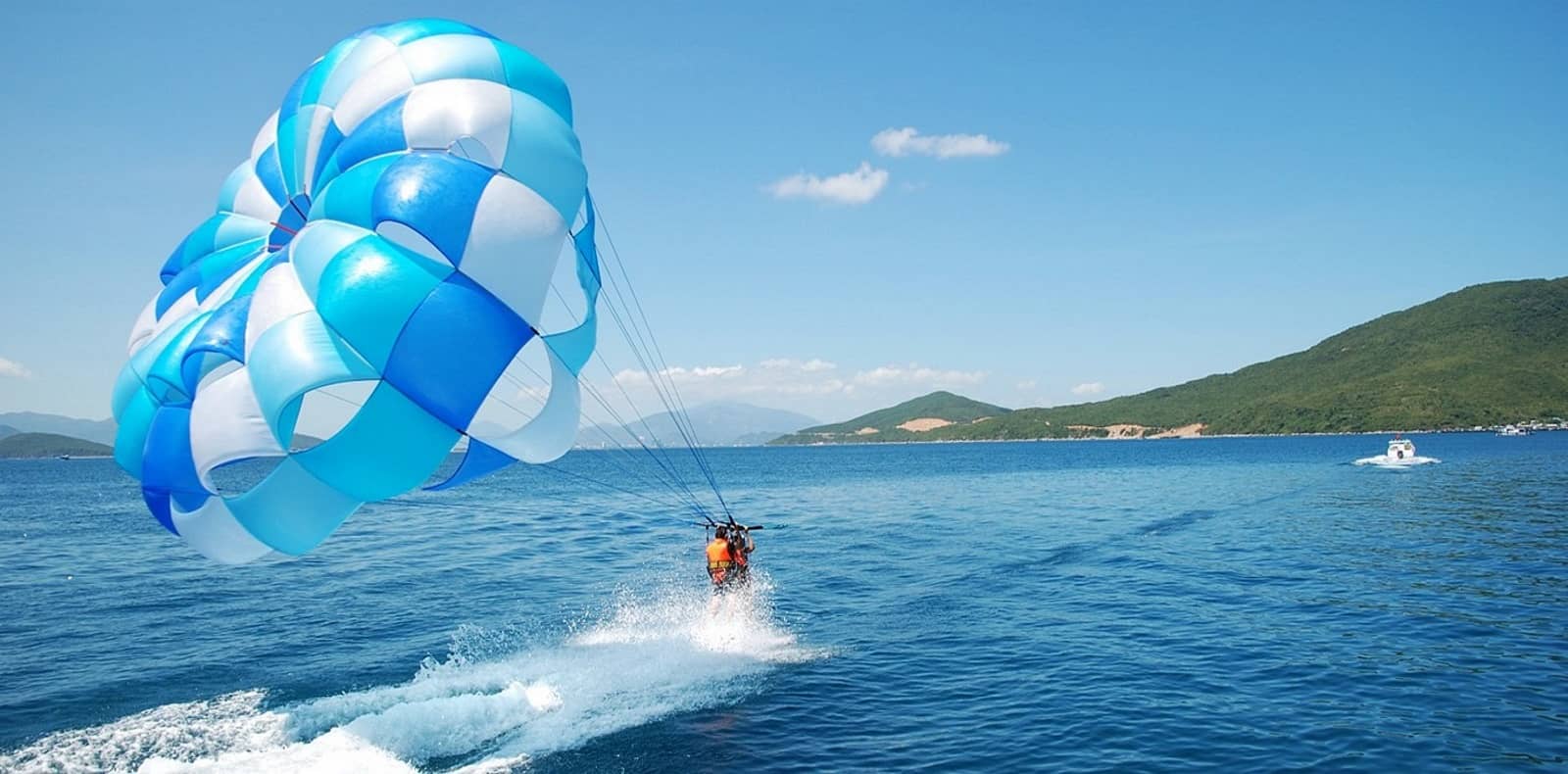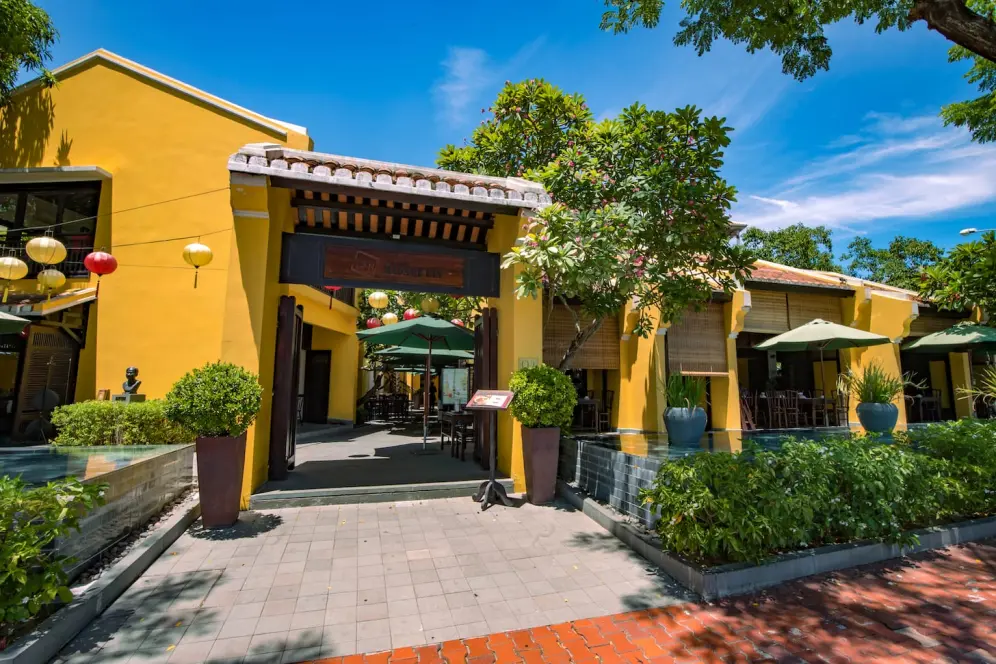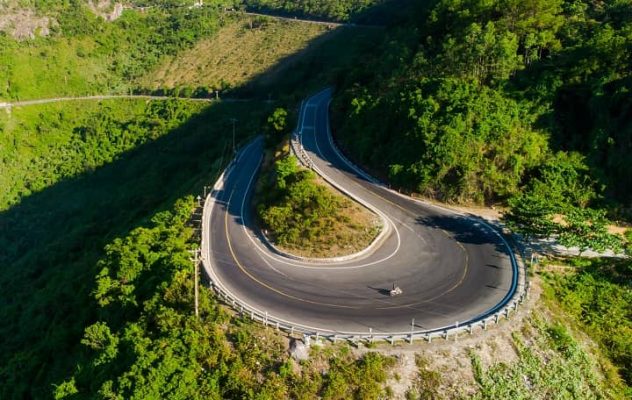
Hai Van Pass – The most dangerous coastal pass in Vietnam
Hai Van Pass stands as a majestic natural divide in Central Vietnam. Renowned for its breathtaking panoramic views of misty mountains merging with the azure waters of the East Sea, this iconic mountain pass offers more than just a scenic drive—it encapsulates centuries of cultural heritage and historical significance. From ancient Cham kingdoms to its strategic importance during French colonial rule, Hai Van Pass beckons travelers to explore its beauty and unravel its rich tapestry of stories. Plan your adventure with hiking, photography, and local cuisine. Experience Vietnam’s iconic Hai Van Pass today with Ula Travel!
I. Overview of Hai Van Pass
1. Where is Hai Van Pass?
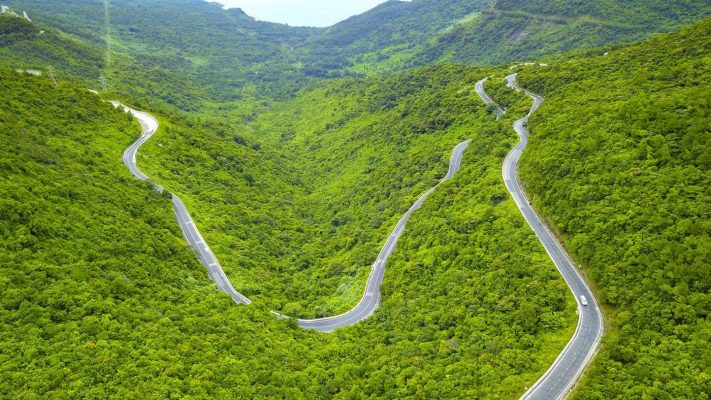
You can explore Hai Van Pass from Hue or Da Nang
Hai Van Pass, a stunning mountain pass, is located in Central Vietnam. It stretches along the Annamite Range, serving as a natural boundary between Hue and Da Nang. This iconic route is about 21 kilometers (13 miles) long and is part of National Route 1A, making it a crucial connector between the major cities of Da Nang and Hue.
- From Da Nang: Hai Van Pass is approximately 30 kilometers (18.6 miles) north of Da Nang. Travelers can reach the pass by motorbike, car, or guided tour. The journey from Da Nang to the pass typically takes about 45 minutes to an hour, offering scenic views along the way.
- From Hue: The pass is around 80 kilometers (49.7 miles) south of Hue. It takes about 2 to 2.5 hours to travel from Hue to Hai Van Pass by car or motorbike. The route is well-marked, and the drive offers a captivating mix of coastal and mountainous scenery.
2. History of Hai Van Pass
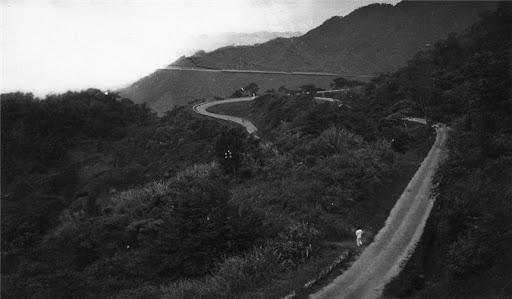
Hai Van Pass 1 century ago
The history of the Hai Van Pass is a significant chapter in the development of Central Vietnam. Before 1306, this area belonged to the Champa Kingdom, divided into two regions: Ô and Rí. However, in the year Binh Ngo (1306), Champa King Che Man offered land as a dowry to marry Princess Huyen Tran of the Dai Viet Kingdom. Since then, the Hai Van Pass has become the natural border between Dai Viet and Chiem Thanh.
A century later, in the year Nham Ngo (1402), the Ho Dynasty sent General Do Man to attack Chiem Thanh, leading the Chiem Thanh King to cede Chiem Dong and Co Luy lands for peace. From then on, the Hai Van Pass became the clear boundary of Dai Ngu, now Vietnam, dividing the regions of Thuan Hoa and Quang Nam.
During the Nguyen Dynasty, the Hai Van Pass continued to serve as a border between Thua Thien and Quang Nam. During the French colonial period, to facilitate movement and avoid wildlife and banditry, the French built a railway through the pass.
In the Republic of Vietnam era, the narrow pass was divided into three sections with three control stations to manage traffic flow. By 1966, the U.S. Navy had expanded the road, allowing for two-way traffic without the need for control stations.
On June 5, 2005, the Hai Van Tunnel was officially opened, improving convenience and safety for transportation. However, the Hai Van Pass still holds a special role in tourism.
Are you looking for: Da Nang tours
3. Meaning of the name “Hai Van”
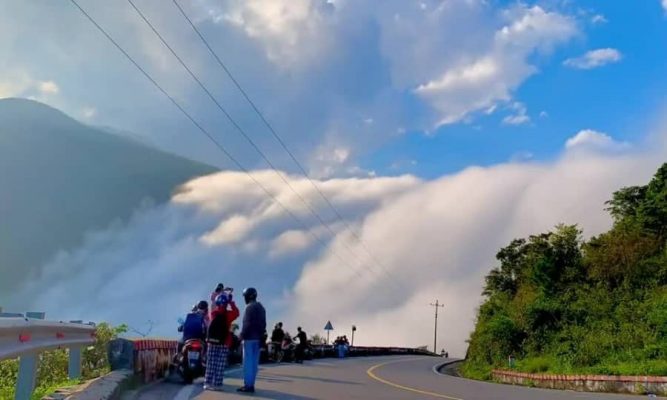
Sea of clouds at Hai Van pass
The name “Hai Van” translates to “Sea of Clouds” in English, a poetic moniker that perfectly captures the ethereal beauty of the pass. This name is derived from the mist and fog that often shroud the mountains, creating a surreal and dreamlike atmosphere.
The interplay of sea breezes and mountain air frequently results in rolling clouds that envelop the pass, giving travelers the sensation of driving through a sea of clouds. This natural phenomenon is most commonly observed in the early morning or late afternoon, adding a mystical charm to the journey.
The name “Hai Van” also reflects the pass’s dual nature, where the sea and sky seem to merge. It symbolizes the harmony between the elements and the breathtaking union of land, water, and air that defines the pass’s unique allure.
II. What makes Hai Van Pass attractive?
1. Breathtaking Views of the Mountains and Sea
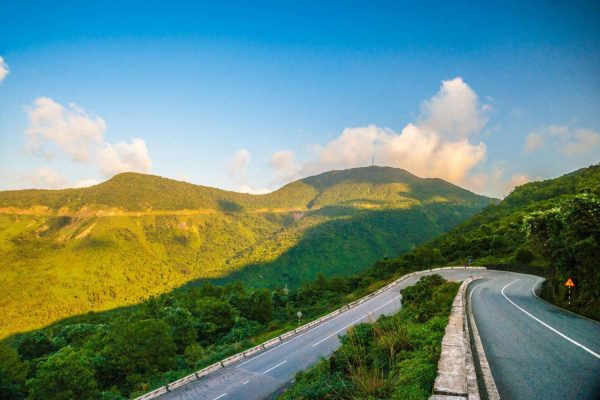
Majestic scenery of Hai Van Pass
Hai Van Pass, often heralded as one of the most scenic coastal roads in the world, offers travelers an unparalleled visual feast. As you traverse the winding roads, you’re treated to panoramic vistas where the lush, green mountains meet the azure waters of the East Sea. The dramatic contrast between the rugged mountains and the shimmering sea creates a stunning backdrop that is both serene and awe-inspiring.
The pass itself snakes through the Annamite Range, providing numerous vantage points from which you can gaze out over pristine beaches, verdant forests, and distant islands. The ever-changing play of light and shadow across the landscape, especially during sunrise and sunset, adds a magical quality to the journey.
Start your journey with: Da Nang to Hue – Unexpected Trip You’ll Love
2. Unique Flora and Fauna in the Area
Hai Van Pass is not just a visual spectacle; it is also a haven for biodiversity. The region is home to a variety of unique flora and fauna, making it a paradise for nature enthusiasts.
The lush forests that cloak the mountains are rich with diverse plant species, including rare orchids and medicinal herbs that thrive in the moist, temperate climate. Birdwatchers can delight in spotting a variety of avian species, from colorful kingfishers and hornbills to the more elusive mountain eagles and pheasants.
The forested areas are also inhabited by small mammals and reptiles, adding to the ecological richness of the pass. The interplay of diverse ecosystems, from coastal habitats to montane forests, makes Hai Van Pass a significant ecological corridor in central Vietnam.
III. Exciting experiences at Hai Van Pass
1. Explore the historical site of Hai Van Quan.
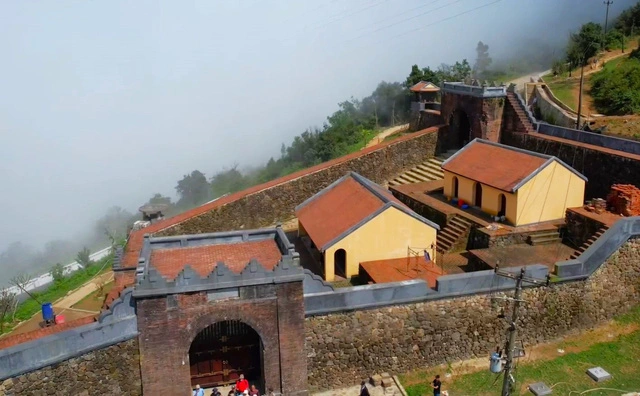
Hai Van Quan after being restored
Hai Van Quan, also known as the Hai Van Gate, is a historical fortress located at the top of Hai Van Pass. Built by the Nguyen Dynasty in the early 19th century, this ancient structure served as a strategic military post. Visitors can explore the ruins of the gate, enjoy panoramic views, and learn about its historical significance through informative plaques and local guides.
Hai Van Quan is memorable to tourists because of its majestic and beautiful natural scenery. From the gate, you will see rolling mountains, winding mountain passes, a blue coastline, and a soaring sky. At Hai Van Quan, visitors will get super impressive check-in photos at the North-South Thien Ly road.
More details: Central Vietnam Wonders Tour
2. Admire the stunning natural beauty at Turtle Rock.

Surreal view at Turtle Rock
Turtle Rock is one of the most iconic spots along Hai Van Pass. This uniquely shaped rock formation, resembling a turtle, offers breathtaking views of the surrounding mountains and the East Sea. It’s a perfect spot for photography enthusiasts and nature lovers to capture the serene beauty of Vietnam’s landscapes.
3. Discover the Arched Bridge of Don Ca
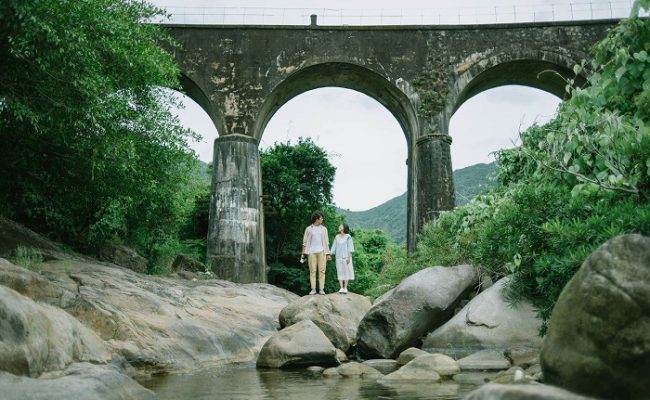
Arched Bridge of Don Ca
The Don Ca Arched Bridge is a lesser-known gem near Hai Van Pass. This charming old railway bridge, nestled in lush greenery, provides a picturesque setting reminiscent of scenes from a bygone era. Exploring the bridge and its surroundings offers a glimpse into Vietnam’s historical railway system and an opportunity for a peaceful walk in nature.
Read more: Discover Central Vietnam Tour in 6 Days
4. Cloud hunting with spectacular views
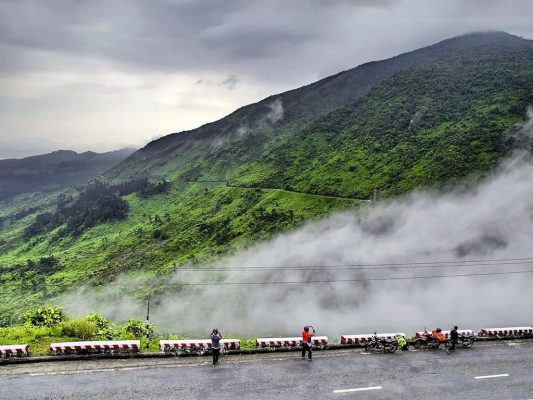
Cloud hunting is the purpose of many tourists when coming to Hai Van Pass
Hai Van Pass is famous for its mesmerizing sea of clouds, especially in the early morning or late afternoon. Cloud hunting is a popular activity where travelers wait for the right moment to witness the clouds rolling over the mountains, creating a magical, dream-like scenery. This experience is ideal for photographers and those seeking a serene and awe-inspiring moment.
5. Challenge Your Driving Skills with the Thrilling U-Turns
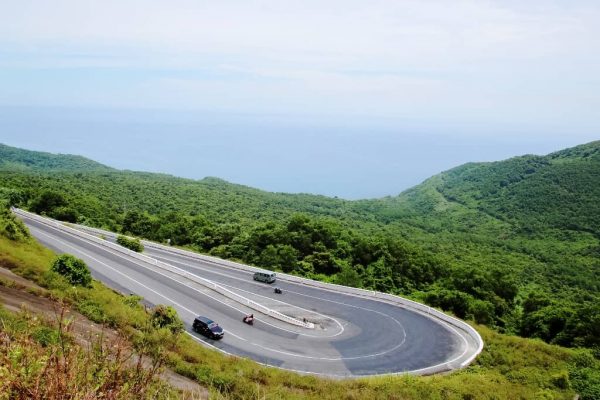
The bend known as death attracts many tourists
Hai Van Pass is renowned for its winding roads and sharp U-turns, often referred to as “death-defying hairpin bends.” These curves provide an exhilarating challenge for motorcycle riders and drivers alike. Navigating these twists and turns requires skill and caution, but the adrenaline rush and stunning vistas make it a must-do experience for adventure seekers.
6. Camp at Van Village
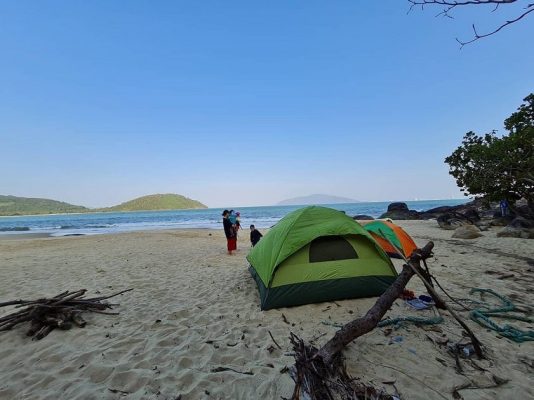
Camping in Van Village
Van Village, a hidden gem at the base of Hai Van Pass, is an ideal spot for camping enthusiasts. This secluded village, accessible only by foot or boat, offers pristine beaches, crystal-clear waters, and a tranquil environment. Camping at Van Village allows visitors to immerse themselves in nature, enjoy a night under the stars, and experience the peaceful side of Vietnam away from the bustling tourist spots.
IV. Nearby Attractions
When visiting Hai Van Pass, you’ll find an array of nearby attractions that are equally captivating. Here’s a detailed look at some must-visit places in the vicinity:
1. Lang Co Beach
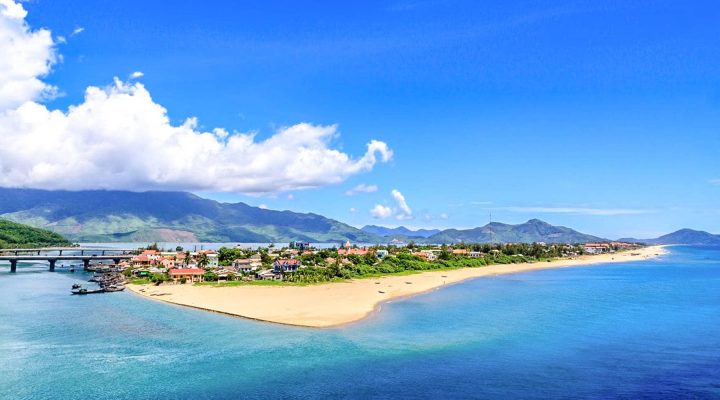
Lang Co Beach
Just a short drive from Hai Van Pass, Lang Co Beach is a serene coastal paradise known for its pristine white sands and clear blue waters. This picturesque beach is ideal for swimming, sunbathing, and enjoying fresh seafood at the local restaurants.
The tranquil setting makes it the perfect spot for relaxation after the adventure of traversing Hai Van Pass. Don’t miss the chance to explore the nearby fishing villages for a glimpse into local life.
Do not miss: Best things to do in Hue
2. Bach Ma National Park
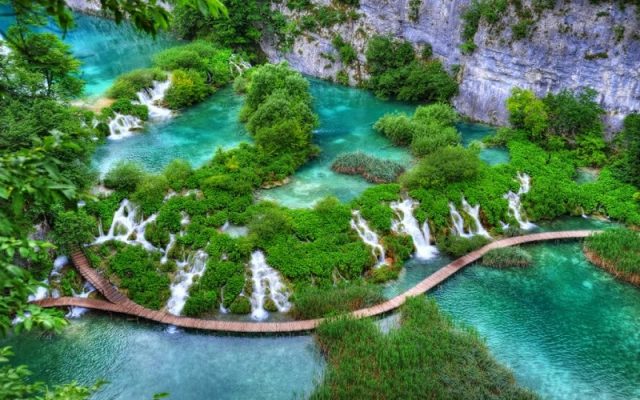
Bach Ma National Park
Located about 40 kilometers from Hai Van Pass, Bach Ma National Park is a haven for nature enthusiasts. The park boasts lush forests, stunning waterfalls, and diverse wildlife, including rare species of birds and mammals. Hiking trails offer breathtaking views and the opportunity to immerse yourself in the natural beauty of central Vietnam. Bach Ma’s cool climate and rich biodiversity make it a refreshing escape from the heat.
3. The City of Da Nang
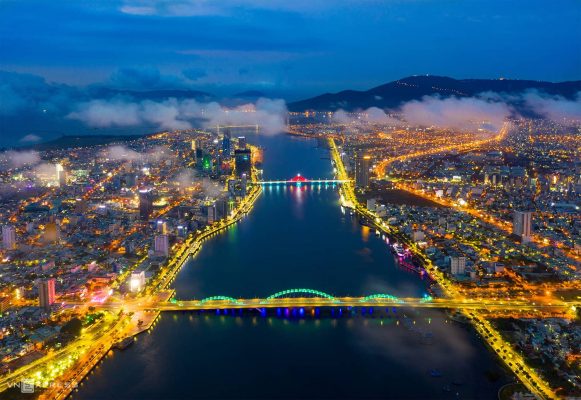
The vibrant city of Da Nang
Da Nang, a vibrant city just south of Hai Van Pass, is a hub of culture, history, and modern attractions. Visit the iconic Dragon Bridge, which breathes fire and water on weekends, or explore the ancient Marble Mountains with their caves and Buddhist temples. My Khe Beach is perfect for water sports or a leisurely day by the sea. For a taste of local cuisine, don’t miss the bustling Han Market or the vibrant streets.
Learn more about: Da Nang Attractions
V. Practical Information for Travelers
1. Best Time to Visit Hai Van Pass
Choosing the right time is an important factor when planning your trip. The best time to visit Hai Van Pass is during the dry season, from March to August. During this period, the weather is more stable, with less rain and fog, making travel easier and safer.
2. Accommodation Options Nearby
Hai Van Pass is situated between Da Nang and Hue, both of which offer a range of accommodation options:
In Da Nang:
-
- Luxury Hotels: InterContinental Danang Sun Peninsula Resort, Furama Resort Danang
- Mid-range Hotels: Sanouva Danang Hotel, Grand Mercure Danang
- Budget Hostels: Barney’s Danang Backpackers Hostel, Funtastic Danang Hostel
In Hue:
-
- Luxury Hotels: Azerai La Residence, Hue, Pilgrimage Village Boutique Resort & Spa
- Mid-range Hotels: Alba Spa Hotel, Eldora Hotel
- Budget Hostels: Hue Happy Homestay, IBIZA Guest House
3. Transportation Tips
Hai Van Pass is accessible via several modes of transportation, each offering a unique experience:
By Motorbike:
- Experience: Riding a motorbike provides the most immersive experience, allowing you to fully appreciate the stunning scenery and make stops at various viewpoints.
- Rental: Motorbikes can be rented in Da Nang or Hue for around $7–15 per day. Ensure the bike is in good condition, and always wear a helmet.
- Tips: Familiarize yourself with Vietnamese traffic rules, carry a map or GPS, and check the weather forecast before setting out.
By Car:
- Comfort: Traveling by car is more comfortable and safer, especially during the rainy season. You can hire a private car with a driver or rent a self-drive car.
- Rental: Car rentals are available in Da Nang and Hue, with prices starting at $30 per day. For a more relaxed journey, consider hiring a car with a driver, which costs around $60-100 for a one-way trip.
- Tips: Ensure the car has GPS or use a navigation app. The plan stops at key viewpoints and historical sites along the pass.
By Public Transport:
- Options: Buses and trains are available, but they usually take the tunnel bypassing Hai Van Pass. For the best experience, consider taking a train from Da Nang to Lang Co, then hiring a motorbike or car for the pass.
- Train: Trains offer a scenic alternative, with views of the coastline. The Reunification Express runs between Da Nang and Hue, and tickets can be purchased at the station or online.
- Tips: If taking a train, book a seat on the right side for the best views. From Lang Co., hire a motorbike or car to explore the pass.
VI. Travel Tips for Hai Van Pass
Navigating the winding roads of Hai Van Pass can be both thrilling and challenging. Here are some essential safety tips to ensure a safe and enjoyable journey:
- Check Your Vehicle: Before embarking on your trip, ensure your motorcycle or car is in excellent condition. Check the brakes, tires, and fuel levels. If renting a motorbike, choose a reputable rental company and inspect the vehicle thoroughly.
- Wear protective gear: Always wear a helmet if you’re riding a motorcycle. It’s also advisable to wear protective clothing such as gloves, long sleeves, and sturdy shoes.
- Drive Carefully: The roads can be narrow and winding, with sharp turns and steep inclines. Drive at a moderate speed, especially around corners, and be mindful of oncoming traffic. Keep to your side of the road, and use your horn to signal your presence when approaching blind spots.
- Weather Conditions: Check the weather forecast before your trip. Avoid traveling during heavy rain or fog, as visibility can be significantly reduced, making the journey more dangerous.
- Take breaks. Don’t rush through the pass. Take regular breaks to rest, hydrate, and enjoy the scenery. This will help you stay alert and reduce fatigue.
- Emergency Kit: Carry a basic emergency kit, including a first-aid kit, a flashlight, and tools for minor repairs. It’s also wise to have a fully charged mobile phone and a power bank.
Hai Van Pass stands as a testament to Vietnam’s natural beauty and historical significance. Its majestic landscapes, steeped in centuries of history, from the Cham Kingdom to French colonial rule, offer breathtaking views and cultural insights. Whether you’re captivated by its panoramic vistas, intrigued by its historical landmarks like the Hai Van Gate, or simply seeking an adventure through its winding roads, Hai Van Pass promises an unforgettable experience for travelers. Don’t miss the opportunity to explore this iconic destination on your next journey to Vietnam.
See more: Da Nang travel tips





